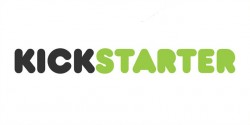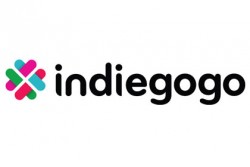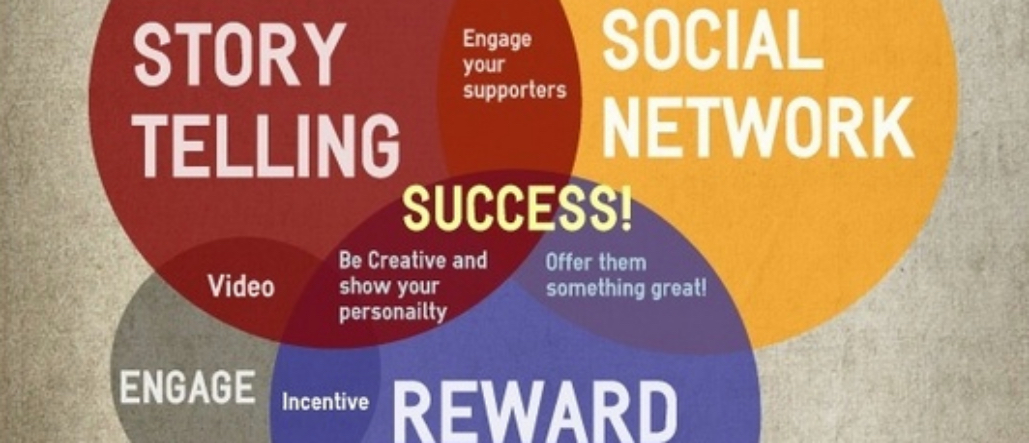
Introduction
It seems part magic and part dumb luck. A kitten card game raises almost $9 million. A movie based on a cult TV show draws in nearly $6 million. A space simulator game still in development brings in $80 million. These are the wildly successful crowdsourcing stories, but for every successful campaign, Kickstarter is littered with failed game funding pleas.
So what works and why?

“It seems cutting edge technology projects or games that are being lead by well-known industry veterans that have large fan bases have the best chances of success.”
— Phil Balisciano, Game Designer
Funding a Cause
Well, first some full disclosure – I have not run a crowdfunding campaign. But I’ve studied them. I’ve watched in awe as campaigns, such as Reading Rainbow’s, burst out of the gates to reach large goals mere hours from their launch. I’ve cheered on indie studios that can use crowdfunding to help get their projects off the ground, and I’ve shared in disappointment of quirky projects that were unsuccessful in reaching their goals.
Crowdfunding is defined as “the practice of funding a project or venture by raising many small amounts of money from a large number of people, typically via the Internet.”
And we’ve heard of big money being raised in these small donations way. There’s been Pebble, Oculus Rift, the Veronica Mars Movie, Coolest Cooler, Ouya and Star Citizen – which has raised over $81 million from crowdfunding (and still earning) – making it the most crowdfunded thing ever, earning a place in 2014’s Guinness Book of World Records.
VIDEO: A TAKE ON WHAT WORKS
Crowdfunding Fuels Big Change from RocketHub on Vimeo.
But what makes some campaigns huge hits, and others never get off the ground? For Ivan Askwith, strategist of several highly successful campaigns including “Bring Reading Rainbow Back For Every Child, Everywhere!” and the “Veronica Mars Movie Project”, the answer lies in the word.
“I think the biggest mistake is thinking that ‘funding’ is the biggest part of the word, but it’s the crowd,” he said. “If you just want funding there are easier and lower-risk ways to get it.”
Askwith said the organizer of a campaign needs to realize, “There is no higher commitment way to earn money than crowdfunding. No one is doing you a favor when they crowdfund. They are invested in it for some reason – they are invested in the specific goal or promise of the idea.”
Despite his history of successful crowd-sourced campaigns, Askwith said, “I discourage more people than I encourage. It’s not going to be easier money, in a lot of cases you are working harder than you ever have for that money, and you are gambling your reputation.”
For some well-known names such as Zach Braff and Spike Lee, that gamble can lead to a backlash when they went to the crowd to finance their projects. But for lesser-known entities, the damage can occur, Askwith said, when they fail to establish a fan base at all by not finding a cause that people can back. “Projects that shouldn’t go into crowdfunding are those that don’t share any goals or visions of the crowd,” Askwith said.
Uncracking the Mobile Code
Experts in the field also have found there are certain factors that, for some reason, play against certain pitches finding a community of support. One of those appears to be mobile games.
Curious Media turned to Kickstarter last year to help fund one of their internal projects, Phil the Pill.
Their campaign failed.
“Our product wasn’t unique or nostalgic enough to pick up much news coverage outside of a few niche gaming blogs and such. It seems cutting edge technology projects or games that are being lead by well-known industry veterans that have large fan bases have the best chances of success,” said interactive producer Phil Balisciano. “That’s not to say there haven’t been some successes on the mobile side, they are just much few and farther between.”
Some of those who have found success, such as Codespells and The Hole Story, still had a plan going in.
Codespells, created by ThoughtSTEM, worried their goal of $50,000 was too high.
“We did a lot of research on how much other video game Kickstarters made and saw the huge variation in results. And with the previous coding education video game Kickstarter (Code Hero) completely flopping, we were worried no one would trust us as experts in the field,” said Lindsey Handley, COO of ThoughtSTEM. “When we made our goal in the first week of the campaign, we were flabbergasted.”

Picking the Platform
Many people immediately assume crowdfunding equals Kickstarter, but there are several options to consider.
Crowdfunding models break down into four areas – rewards (ie. Kickstarter), donation (ie. GoFundMe), equity (ie. Crowdfunder) and lending (ie. Lending Club).
Every platform has it’s own business model, tools for the campaign, and reach. Below is a breakdown of a few popular platforms, comparing/contrasting their features.

About:
“We’re a home for everything from films, games, and music to art, design, and technology. Kickstarter is full of projects, big and small, that are brought to life through the direct support of people like you.”
Point of Difference:
All or nothing model – if you don’t reach your goal, you keep none of the money.
Fees:
If you reach your goal, Kickstarter keeps 5%. Payment processing fees of 3-5%.

About:
“Indiegogo is a way to discover projects that people are passionate about all over the world; where you can take action to help create more of what you love.”
Point of Difference:
Flexible or Fixed Funding model – you decide if your project will benefit from any amount of funding or can only happen if you receive a certain amount of money.
Fees:
If you reach your goal, Indiegogo keeps 4%. If you have chosen Flexible Funding and don’t reach your goal, but choose to keep the money, they keep 9%.
Payment processing fees of 3-5%.

About:
“The beauty of GoFundMe is that it allows campaign organizers to invite others to take part in their story. Just as we share parts of our lives on Facebook, we also want to share our dreams, pursuits, celebrations and challenges online with crowdfunding. People will always be eager to support others they care about. GoFundMe removes the physical barriers traditionally associated with receiving financial support from the people in our lives.”
Point of Difference:
No deadlines or goal requirements, and keep every donation received.
Fees:
GoFundMe keeps 5% of every donation.
Payment processing fees of 2.9% + $0.30.

About:
“Connecting entrepreneurs with investors around the world to help fund their business and fuel economic growth.”
Point of Difference:
Investments are made for equity in the company, versus other platforms that give ‘rewards’ for contributions.
On March 25, 2015, the SEC passed Title IV of the JOBS Act, allowing non-accredited investors to participate in equity crowdfunding. It will take roughly 60 days from March 25th to be put into action.
Fees:
Flat monthly fee (amount not public) charged to help get your idea in front of potential investors.

About:
“Prosper is the market leader in peer-to-peer lending—a popular alternative to traditional loans and investing options. We cut out the middleman to connect people who need money with those who have money to invest…so everyone prospers!”
Point of Difference:
Borrowers make fixed monthly payments and investors receive a portion of those payments directly to their Prosper account. Allows borrowers to receive unsecured-no collateral loans. Allows investors competitive returns on investments.
Fees:
Rates from 6.68% to 35.36% APR

“30 days is enough time to turn a campaign around. If the idea itself is not working you can’t turn it around, but if it’s a messaging problem, it is possible.”
Ivan Askwith, Crowdfunder
Running the Campaign
The Must Haves to Launch a Campaign
Still think crowdfunding could be for you? Make sure you have these things in place before considering it as an option for your project:
– Your idea needs to be well formulated and needs a clear road map.
– Your idea can’t be too generic and should inspire. On the other hand, your idea needs to be simple enough to translate well to a broad audience.
– Your idea should be scalable, so that in success you can grow it to meet demand.
– You should have some form of proof of concept in place, to test the basic idea of your project, and to clearly demonstrate your idea to the public so they can get on board with you.
– Your core team should be in place, or at least an idea of what kind of team members you need to bring the vision to life.
Preparing Your Campaign
VIDEO: KICKSTARTER SCHOOL
So what does a small studio like ThoughtSTEM think are the most important considerations before kicking off a campaign?
Video, visually appealing art and marketing ready for Launch Day.
“Because the first thing anyone sees on your Kickstarter page is the video, our number one priority was video content. We spent a lot of time early on figuring out exactly what video content we wanted/needed for the Kickstarter, long before we started developing the actual game. We developed the game to exactly the state we needed in order to get the video content we needed,” Handley said.
She said her team also spent days doing the legwork to market the campaign even before launch.
“We contacted everyone we knew that had anything to do with video games, computer science, and/or education to let them know we were launching a Kickstarter and if they had any advice about how we could promote our campaign or who might be interested in backing this sort of campaign,” she said. “Before the Kickstarter ever launched we had 500 e-mail addresses that we planned to contact about our Kickstarter campaign with an e-mail already pre-written for them. This e-mail list included the editors of various news sources we expected might publish for us. We also spent months in advance populating Twitter & Facebook accounts so we would appear to be an established brand.”
What to Expect During Your Campaign
So you’re ready to take your project to the public. Here are some things to expect or be prepared for.
“The general wisdom is if you don’t have one third of the money secured in the first 24-48 hours your campaign won’t succeed, but it’s not unheard of to see a campaign succeed in its final hours or days,” said Askwith.
He added the key is to revisit the campaign if it doesn’t come out of the gate fast and see if there are ways to revive it, or re-think it.
“In some cases the changes you might need to make are big enough that you might need to cancel the campaign, give thanks to your supporters, tell them you were missing some critical components and try to launch it again,” Askwith advises. But, he adds, “30 days is enough time to turn a campaign around. If the idea itself is not working you can’t turn it around, but if it’s a messaging problem, it is possible.”
In the event that you not only meet your campaign goals, but exceed them, you need to be prepared to reach goals with your additional funds. Have a plan in place for “stretch goals” – these could be wider distribution of your game, free access to classrooms, more levels, better art – anything that could further inspire your funders to keep giving.
And, perhaps obviously, the more you can do to secure some press to increase the chance of a little viral pickup with your campaign at launch, the higher chance you have of gaining traction.
And in failure there is room to learn and improve. Despite their failed Kickstarter campaign, Curious Media went on to complete and launch Phil the Pill. They would consider crowdfunding again, but under different circumstances. “I would try crowdfunding again but with a physical product. I would also try to get the word out through videos, games and other content to grow a fan base before launching the campaign.”
